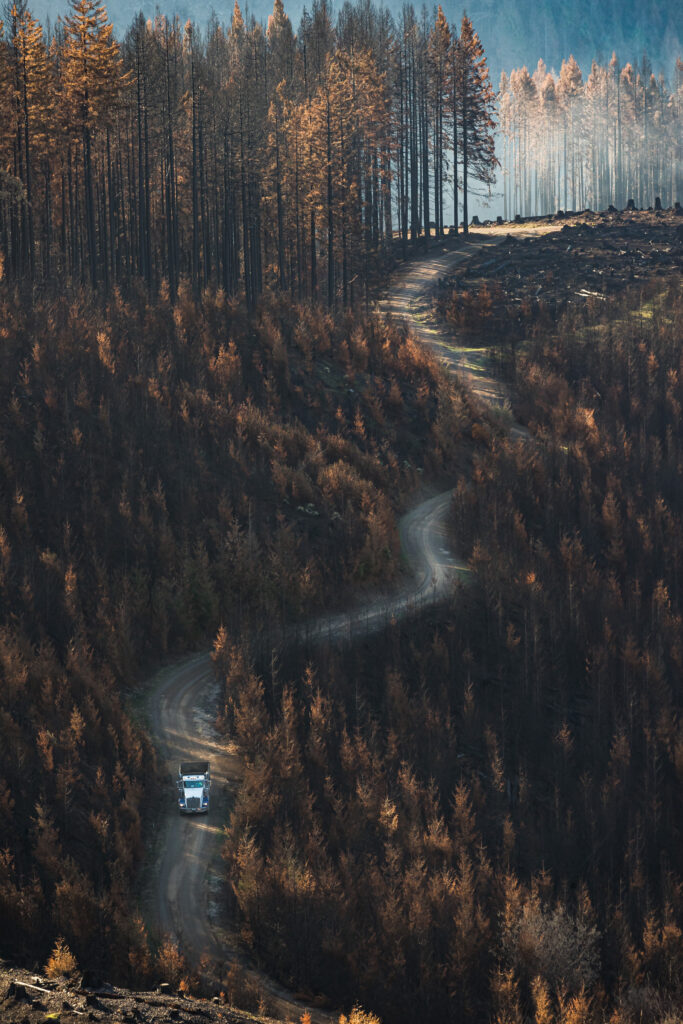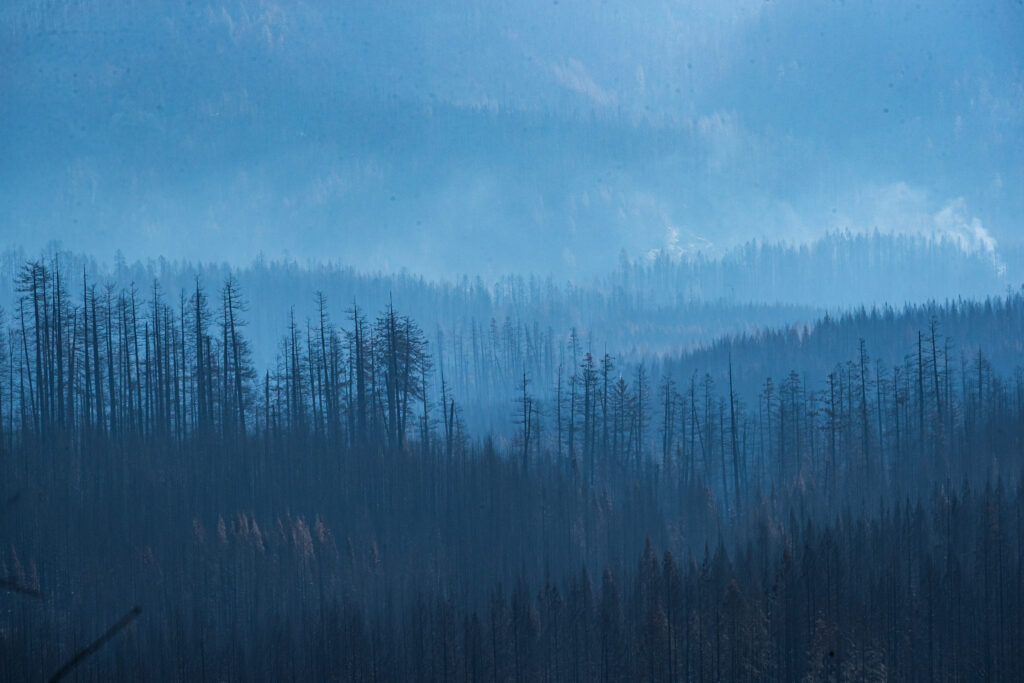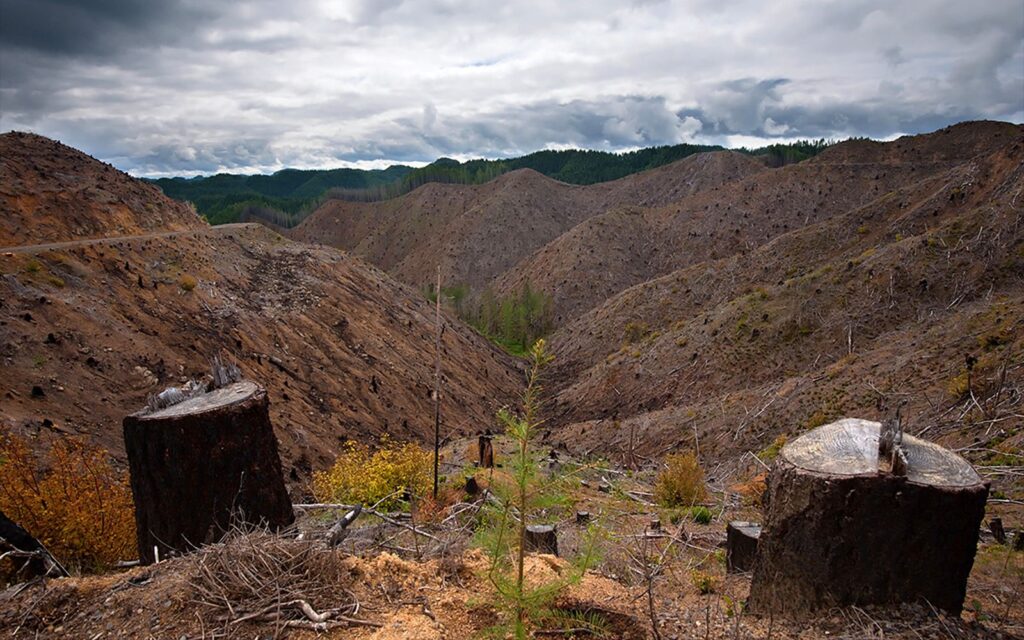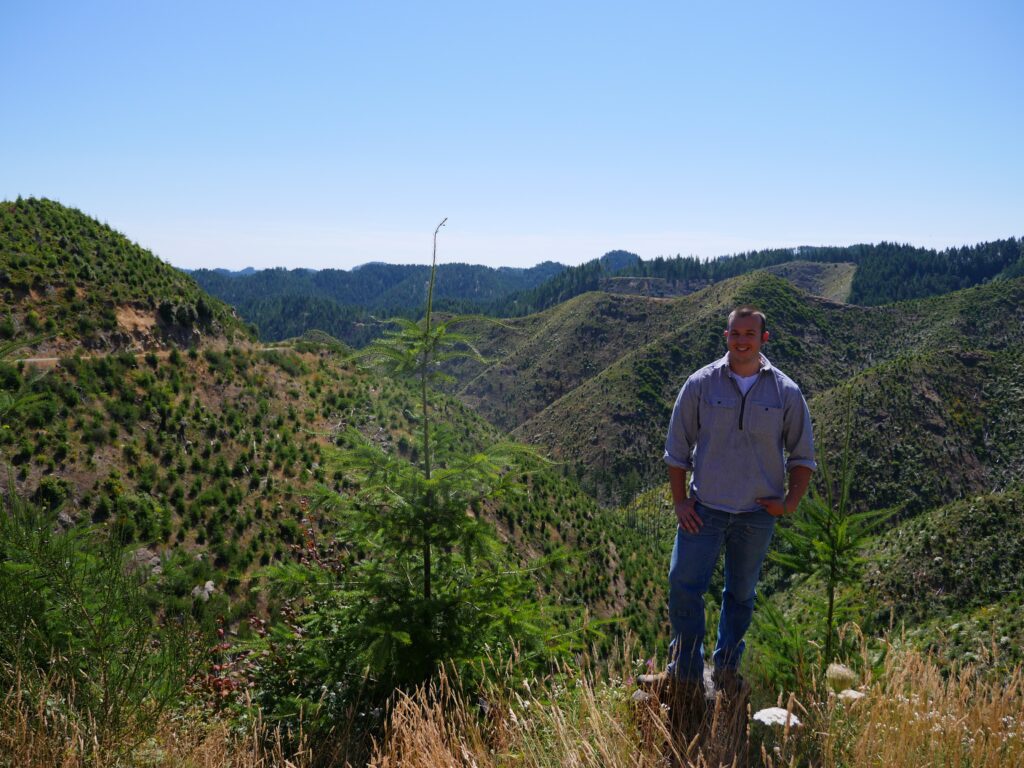
Work. Play. Renew.
Q&A with Roseburg: Post-fire Restoration
It’s been almost a year since the 2020 Labor Day fires torched over a million acres in Oregon, and now we’re in the midst of another summer and another potentially destructive fire season. Even before June 2021 was over, we saw three times more fires start and three times more acres burned in Oregon than is normal for that time of year.
Every corner of Oregon is suffering drought. Any rain we’ve seen has been spotty, and really only helpful west of the Cascades.
As we’re deep into another fire season, we thought we’d check in with Charley Moyer, District Forester, and Jason Colter, Senior Forester at Roseburg Forest Products to find out what they’ve been doing in areas of private forests that were burned to make sure they don’t re-burn this fire season.

1. How many acres of Roseburg forestlands burned or were affected by large fires?
Roseburg is no stranger to fires: since 2013, we’ve had well over 48,000 acres of our timberlands severely impacted by five large fires.
2. What does Roseburg do after a large fire?
Our planning for rehabilitation starts as soon as we start to grasp the fire impacts – often, while still fighting the fire! Hazards, such as fallen trees, must be mitigated and all infrastructure evaluated for safety. Roads have to be cleared and culverts must often need to be replaced to ensure access.

We then salvage the burned merchantable timber on our property and replant both salvaged areas as well as burned areas that could not be salvaged. Harvest of these standing dead trees and reforestation is vital for quick stabilization of soil, protection of clean water, and restoration of vital habitat for fish and wildlife for decades to come.
Reforestation also re-starts the clock on carbon sequestration; leaving standing dead timber is not a climate solution, as the burned, dead wood emits CO2 when it breaks down or quickly releases vast quantities of carbon in a subsequent fire.
3. What about this summer – is there a chance those acres could burn again? What are you doing to prevent that?
Yes, burn scars are extremely susceptible to burning again. The Tillamook Burn is a great example of this here in Oregon – it re-burned four times over an 18-year period! The Archie Creek Fire (2020), for example, re-burned over the North Umpqua/Fall Creek Fires (2017), the Cable Crossing Fire (2015), the Williams Creek Fire (2009), and the Apple Fire (2002). Currently, the Jack Fire (2021) is burning in the fire scars of the Happy Dog Fire (2017), Limpy Fire (2002), Apple Fire (2002), Calf 2 Fire (2002), Spring Fire (1996), Apple Fire (1987), and Jack Point Fire (1987). [Source]
Removal of the standing dead trees takes fuels out of the equation, should a fire start in the area again. Snags can also pose hazards to forest workers or firefighters. Re-establishing a young, vibrant forest is most effective in preventing a re-burn.
The Oxbow Fire of 1966 is a great example of perhaps the only large fire in the last 100+ years that has not re-burned. Most of Roseburg’s lands in western Oregon are “checkerboarded” with public lands, and after the 42,000+ acre Oxbow Fire had been stopped, both sides of the property lines, federal and private alike, were promptly salvaged and reforested. These management activities reduced the remaining fuels and quickly re-established forests, which has resulted in no major re-burn of this area since that fire in 1966. While salvage removes future hazards like snags, reforestation that fully restocks the forests with native species provides long-term shading (much quicker than natural regeneration after fires) which increases moisture retention and helps reduce highly flammable brush. All fires within the original burn area have been extinguished at a small size and without the worry of fuel loading or hazards from standing dead timber.
Based on notes recorded by previous foresters of this era, the aggressive salvage of both the private and public lands on the Oxbow Fire was a decision based on the history of the Tillamook Fires; it was an intentional long-term fuel reduction project. [Bob Zybach is a great source for West Oregon fire history.]
4. Are burned forests still open to recreation?
While rehabilitating our lands, we close burned areas to public access for safety reasons. Recreating in burned areas is not a good idea – dead trees can fall at any time, hitting someone or blocking a road; un-stabilized soil can give way; and infrastructure that looks safe on the surface could have significant structural defects.
When rehabilitation is complete, we will communicate the change in recreation status via signs at main entry points such as gates, our website, and our social media channels; we close all of our lands to public access seasonally when the Industrial Fire Precaution Level (IFPL) reaches Level II. Recreation access information for our lands can be found here.
5. How do post-fire restoration efforts differ from standard forest practices? Do you still have to follow the same laws?
The Oregon Forest Practices Act allows for emergencies and recovery from disasters such as wildfire, storm damage, and insect outbreaks; ODF reviews planned operations to ensure compliance. The size of salvage harvest areas may be larger than typical to reflect the disaster’s impact and severity, as well as the need to salvage the dead trees in a timely manner to avoid wood degradation.
Reforestation of burned areas is only required by law if salvage harvests are conducted. Roseburg chooses to reforest non-salvaged lands for a variety of reasons such as long-term sustainability, resource protection, and our long-term vision for our land management goals.
6. What does a forest that’s had post-fire treatment look like 5 or even 10 years later compared to one that hasn’t had treatment?
In 2014, the Yellow Point Fire, an arson, was sparked within the footprint of the Oxbow Fire (1966) on our lands.

Due to the management practices after the Oxbow Fire, we were easily able to stop this fire at just 790 acres. We again managed our lands like before – salvage harvesting and reforesting as soon as possible. Reforestation establishes a healthy, vibrant forest quickly after disasters like this. Here is what it looks like today (2021)!

7. There’s a lot of misinformation out there about “salvage harvests.” What is a salvage harvest and how is that different than harvest of a healthy forest?
Salvage harvest is the removal of dead, dying, or deteriorating trees after an event such as wildfire or snow/ice/wind damage. These operations must occur before the wood deteriorates, and differ from “regular” harvests in that we typically do not plan to harvest these areas, and often at such a large scale. Sometimes these salvage operations harvest trees that are “green” and appear to still be alive; however, the damage to their foliage and roots means that they will die sooner than later. Also, some trees that do survive fires often don’t do well after their ‘neighbors’ die off or are salvaged, due to wind and sun exposure they’ve not been used to.
These salvage harvests are a long-term fuel reduction and insect management tool. While the fire is part of the natural ecosystem, the fire return interval is measured in hundreds of years in western Oregon, versus 10’s of years in eastern Oregon. The big game-changer is the amount of public-caused fires and climate change. Having more starts per year and generally drier conditions increases the potential for large fires.
8. Can the burned trees be used for lumber? What happens with them?
Yes! The fire killed the large trees, but as you can see in the pictures, the damage is mostly contained to the bark. This means that inside the bark, the wood is still solid and good for use.

But we do need to harvest the dead trees as quickly as possible – wood-boring beetles are attracted to the dead trees and can wreak havoc on wood quality. Also, once winter rains hit the year following the fire stain can set in and rot begins to occur.
Our burned logs get sent to our mills and utilized just like unburned logs.